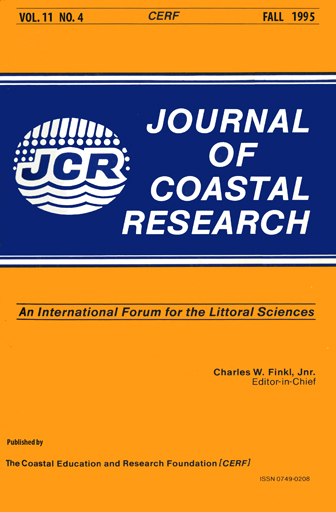The Impact of the October 1991 Northeaster Storm on Barrier Island Shrub Thickets (Myrica cerifera)
Keywords:
Flooding, ground water, salinity, water relations.Abstract
The 1991 Halloween storm was one of the strongest northeasters in the last 50 years along the Atlantic coast of North America. As much as 80% of Hog Island, a Virginia, U.S.A. barrier island, was submerged during the storm. Myrica cerifera shrub thickets dominate the low-lying swales on the island. One week after the storm, ground water salinity levels within the thickets were as high as 6%o, especially near the bay Side fringe marsh. Ground water salinities returned to pre-storm levels by May 1992. Despite the magnitude of the storm, thicket mortality was confined to an eroding portion of the island where physical damage from wave action occurred. Laboratory experiments with M. cerifera indicated that complete stomatal closure may have occurred during the storm pulse of salinity. However, when salinity was reduced, physiological parameters quickly returned to normal levels. Myrica cerifera thickets are apparently resilient in response to salinity pulses and flooding associated with maritime storms.


